List of New York City Police Department officers
This article is about notable uniformed police officers in the New York Police Department. For a list of police commissioners, see List of NYPD Police Commissioners.
This is a list of New York City Police Department (NYPD) officers.
Early years: 1845–1865
See also: New York City Police Riot and New York Draft Riots
| Name | Portrait | Rank | Life | Service years | Comments | Ref. |
|---|---|---|---|---|---|---|
| Francis J. Banfield | No image available |
Sergeant | 1827–1883 | 1857–1883 | Officer in charge of the State Armory at Second Avenue and Twenty-First Street. He was also a member of the "Steamboat Squad" later in his career. | [1][2] |
| James Z. Bogart | No image available |
Captain | 1821–1881 | 1857–1870 | During the New York Draft Riots, Bogart led a police force against rioters looting the home of J.S. Gibbons, a cousin of New York Tribune editor Horace Greeley. | [2] |
| Charles N. Brackett | No image available |
Captain | 1831–1888 | ?–1888 | [2][3] | |
| Samuel Brower | No image available |
Captain | Police official who led a police detachment to cut down African Americans who had been hanged from lamp posts. | [1][2] | ||
| Cornelius Burdick | No image available |
Sergeant | He led thirty-two police officers of the "Broadway Squad" who relieved Sergeant Francis Banfield and his men who were defending state armory. | [1][2] | ||
| John Cameron | No image available |
Captain | 1807–1873 | 1857–1873 | Organized the defense of several key buildings in Manhattan including the State Armory and the Union Steam Works during the New York Draft Riots. | [2] |
| Daniel C. Carpenter | No image available |
Inspector | 1815–1866 | 1847–1873 | Police detective who led squads against rioters in Broadway, the Fourth Ward, Second Avenue and other areas. | [1] |
| Theron S. Copeland | No image available |
Captain | 1831–1905 | 1855–1903 | Drill officer who co-led a police force with Captain John Dickson against rioters in Clarkston Street who were attacking local African American residents. It was their detachment which discovered the body of William Jones who had been tied to a tree and tortured to death. | [1][2] |
| A.P. Devoursney | No image available |
Captain | One of the officers who defended the New York Tribune during the New York draft riots. | [1] | ||
| Frederick Ellison | No image available |
Sergeant | Patrolman who led one of the first detachments against rioters, he was cut off from his men during the fighting at Third Avenue and Forty-Fourth Street and severely beaten by a mob. He remained unconscious throughout the fighting and was not rescued until the arrival of Sergeant Wade several hours later. | [1] | ||
| John S. Folk | 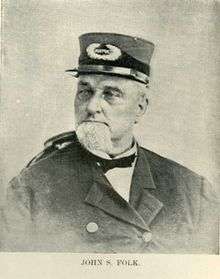 |
Superintendent | 1811–1885 | 1851–1885 | First police chief of the Brooklyn Municipal Police. He defended both the New York Tribune and the Brooklyn Eagle during the Draft Riot of 1863. | |
| John F. Dickson | No image available |
Captain | 1821–1880 | 1850–1880 | Co-led a police force with drill officer Theron Copeland who defeated rioters in Clarkston Street and chased off mobs attacking African Africans. His men discovered the body of William Jones who had been tied to a tree and tortured to death. | [1][2] |
| George W. Dilks | No image available |
Inspector | 1816–1901 | 1848–1888 | Led a force of two hundred officers into Second Avenue and recaptured the Union Steam Works, then being used as a headquarters and rallying point for rioters along the East Side Manhattan, after fierce hand-to-hand fighting against roughly five hundred rioters. | [1] |
| James Irving | No image available |
Captain | 1836–1885 | 1857–1876 | [4] | |
| John Jourdan |  |
Captain | 1831–1870 | 1855–1870 | Led group of sixty men from the Sixth Precinct which battled rioters for over five hours while patrolling African American settlements north and east of the Five Points district during the first day of rioting. | [1][2] |
| John W. Mangin |  |
Sergeant | 1828–1897 | Officer in command of a police detachment with fellow Sergeant S.B. Smith. Their later arrival eventually resulted in the defeat of rioters at Third Avenue and Forty-Fourth Street. | [1][2] | |
| Robert A. McCredie | No image available |
Sergeant | Known as "Fighting Mac", he participated in the fighting at Third Avenue and Forty-Fourth Street. He and Sergeant Wolfe spearheaded an attack against rioters as police were slowly being driven down Third Avenue. McCredie forced the rioters back to Forty-Fifth Street but were eventually overwhelmed. | [1][2] | ||
| Jeremiah Petty | No image available |
Captain | 1814–1889 | 1857–1887 | [2][5] | |
| Galen Porter | No image available |
Captain | 1807–1883 | 1849–1865 | Police official under Superintendent Kennedy involved in organizing police detachments against rioters. During the first hours, he sent sixty patrolmen to reinforce police against rioters on Third Avenue. | [1][2] |
| Sergeant Van Orden | No image available |
Sergeant | Officer who defended the State Arsenal at Seventh Avenue and Thirty-Fifth Street against rioters during the first day of rioting. He had been ordered by Superintendent Kennedy to protect the building after reports that members of the Knights of the Golden Circle would attempt to capture the arsenal. | [1] | ||
| Sergeant Wade | No image available |
Sergeant | Officer who commanded police during the fighting at Third Avenue and Forty-Fourth Street. Although the rioters initially forced police to retreat, he regrouped the remaining patrolman and managed to disperse the mob with the later arrival of Sergeants John Mangin and S.B. Smith. | [1] | ||
| Sergeant Wolfe | No image available |
Sergeant | A participant in the fighting against rioters at Third Avenue and Forty-Fourth Street, he and Sergeant Robert McCredie forced the rioters back to Forty-Fifth Street but were eventually overwhelmed by the thousands of advancing rioters. | [1] | ||
| Johannes C. Slott | No image available |
Captain | He and Captain George Walling led an advanced guard into Ninth Avenue but forced to retreat under heavy fire from rioters. | [1] | ||
| Stephen B. Smith | No image available |
Sergeant | He and Sergeant John Mangin led a detachment of police officers who helped Sergeant Wade defeat rioters at Third Avenue and Forty-Fourth Street. | [1][2] | ||
| Francis C. Speight | No image available |
Inspector | 1816–1877 | 1845–1877 | Commanded police forces guarding the Broadway draft office. A number of his officers, including Sergeants Wade, Mangin, McCredie and Wolfe, later participated in fighting rioters at Third Avenue and Forty-Fourth Street. | [1][2] |
| Peter Squires | No image available |
Captain | 1815–1863 | 1847–1863 | [6] | |
| Henry V. Steers | No image available |
Inspector | 1832–1917 | 1857–1892 | [7] | |
| Thomas S. Steers | No image available |
Captain | 1804–1884 | 1848–1870 | One of the earliest police officials appointed to the Metropolitan police force; also played a prominent role in the Draft Riot of 1863. | [2][8] |
| Thomas Woolsey Thorne | No image available |
Inspector | 1823–1885 | 1857–1885 | Police official who commanded the Twenty-Sixth Precinct, operating from the basement of City Hall, and organized the defense of the New York Tribune. He was also a participant in the Police Riot of 1857. | [1][2] |
| Jacob B. Warlow | No image available |
Captain | 1818–1890 | 1851–1875 | Led detachment from the First Precinct against rioters in the waterfront area and later took part in the defense of the New York Tribune. | [1][2] |
| George W. Walling | No image available |
Captain | 1823–1891 | 1847–1885 | Police official who organized the first "Strong Arm Squad" which was responsible for breaking up the Honeymoon Gang in 1853. Sided with Mayor Fernando Wood during the Police Riot of 1857 but later served a warrant for the mayor's arrest. He played a major role during the draft riots breaking up several large mobs in the Bowery and other nearby districts. | [1][2] |
Post-Civil War era: 1866–1899
| Name | Portrait | Rank | Life | Service years | Comments | Ref. |
|---|---|---|---|---|---|---|
| Anthony Allaire |  |
Inspector | 1820–1903 | 1865–1902 | Credited for the breakup of many street gangs during the post-Civil War era, most notably the Slaughter House Gang and the Dutch Mob, and the arrest of murderer Daniel McFarland in 1869. | |
| William C. F. Berghold | No image available |
Captain | 1838–1909 | 1864–1895 | ||
| Nicholas Brooks | No image available |
Inspector | 1844–1925 | 1867–1906 | ||
| Edmund Brown | No image available |
Sergeant | 1861–? | |||
| Thomas F. Byrnes | 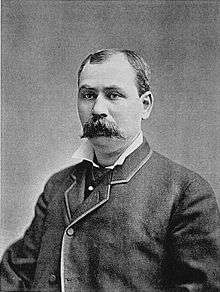 |
Captain | 1842–1910 | 1863–1895 | Headed the NYPD Detective Bureau from 1880 until 1895. During his career, he was responsible for the arrests of countless gang leaders and other criminals of the era. He was also the detective in charge of the murder investigation of suspected Jack the Ripper victim Old Shakespeare. | [1] |
| James Campbell | No image available |
Captain | 1853–? | |||
| Patrick Campbell |  |
Superintendent | 1827– | 1870–1895 | ||
| Edward Carpenter | No image available |
Captain | 1847–? | 1869–1892? | ||
| Philip Cassidy | No image available |
Captain | 1841–1892 | 1870–1892 | ||
| William H. Clinchy | No image available |
Captain | 1844–? | 1865–1892 | ||
| Peter Conlin | No image available |
Inspector | 1841–1905 | 1869–1897 | ||
| Timothy J. Creedon | No image available |
Captain | 1840–? | Police official implicated in police corruption investigations during the 1890s. Admitted that he had paid $15,000 to "fixers" for Tammany Hall in exchange for his position. | [1] | |
| Joseph M. Dorcy | No image available |
Detective | Police detective who pursued and captured a number of high-profile criminals, most notably, Whyos gang member Johnny Dolan in 1875 and embezzler Leon L.J. Bernard in 1876. | [1] | ||
| Thomas L. Druhan | No image available |
Inspector | 1844–1925 | 1870–1906 | ||
| Joseph B. Eakins | No image available |
Inspector | 1844– | 1866–1895 | ||
| John W. Eason | No image available |
Captain | 1843–1903 | 1864–1903 | ||
| Michael Foley | No image available |
Captain | 1845–1920 | 1876–1878 | Advancing thru the NYPD ranks as patrolman, Roundsman, and then 10th Precinct Captain. Constantly vigilant for nefarious operators of “disorderly houses” and local criminals like Owen Geoghegan. | [9][10] |
| Ira S. Garland | No image available |
Inspector | 1830–1902 | 1858–1890 | ||
| George Gastlin | No image available |
Captain | 1835–1895 | 1864–1890 | First commander of the "Steamboat Squad" which eventually cleared out the waterfront area of river pirates, including breaking up the Hook Gang, by 1890.[1] | |
| John Gunner | No image available |
Inspector | 1831–1898 | 1861–1891 | ||
| Henry D. Hooker | No image available |
Captain | 1830–1901 | 1861–1895 | ||
| William J. Kaiser | No image available |
Captain | 1842–1913 | 1866–1888 | ||
| Henry Kellett | No image available |
Captain | 1838–1898 | 1867–1889 | ||
| Thomas J. Kennedy | No image available |
Captain | 1834–1879 | 1860–1879 | [2][11] | |
| Thomas Killilea | No image available |
Captain | 1838–1902 | 1866–1901 | ||
| Patrick H. Leavey | No image available |
Captain | 1813– | 1866–1903 | ||
| Daniel J. Lowery | No image available |
Captain | 1846–1891 | 1874– | ||
| John MacKellar | No image available |
Inspector | 1842–1900 | 1863–1900 | ||
| William J. McKelvey | No image available |
Captain | 1842–1900 | 1863–1898 | ||
| George W. McClusky | No image available |
Inspector | 1861–1912 | 1882–1912 | Police official who led the NYPD Detectives Bureau and was involved in the Becker-Rosenthal murder trial.[1] | |
| John H. McCullagh |  |
Captain | 1842–1893 | 1864–1893 | Police official who closed down a number of well known panel houses including Shang Draper's operation which led to the breakup of his criminal gang.[1] | |
| Charles McDonnell | No image available |
Inspector | 1841–1888 | 1863–1888 | Police official who investigated vice districts, especially forced prostitution and white slavery, and arrested procuress "Jane the Grabber".[1] | |
| Patrick H. McLaughlin | No image available |
Inspector | 1842–1909 | 1866–1905 | ||
| William W. McLaughlin | No image available |
Inspector | 1846–1933 | 1868–1907 | ||
| Thomas Murphy | No image available |
Captain | 1844– | 1867– | ||
| William Murray | No image available |
Superintendent | 1844–1908 | 1866–1892 | ||
| Samuel E. Price | No image available |
Captain | 1856–1914 | 1880–1914 | [12] | |
| George R. Rhodes | No image available |
Captain | 1824–1900 | 1857–1887 | ||
| Thomas M. Ryan | No image available |
Captain | 1831–1907 | 1863–1895 | ||
| John Sanders | No image available |
Captain | 1844–1889 | 1866–1889 | ||
| William H. Schultz | No image available |
Captain | 1867–? | |||
| Max F. Schmittberger | 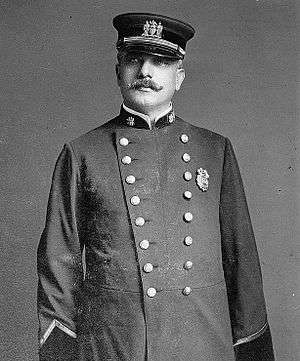 |
Inspector | 1851–1917 | 1874–1917 | Police official implicated during investigations into police corruption. Testified that, as a police sergeant in the Tenderloin district, he collected payments from saloons, illegal gambling houses and other establishments and delivered to then precinct captain William Devery.[1] | |
| Edward Slevin | No image available |
Captain | 1844–1895 | 1873–1895 | ||
| Elbert O. Smith | No image available |
Inspector | 1844–1910 | 1873–1907 | ||
| William John Ernest Stevens | Patrolman and Driver | 1860-1917 | 1893-1915 | Widely known in Brooklyn as the driver for various police inspectors. He was of powerful build and was at one time known as "Big Jack." In 1896 he won a silver cup for lifting 650 pounds from the floor without the aid of harness. After he went on the police force, where he served for twenty-three years, he was almost continuously the driver for inspectors. He was an Oddfellow and a member of the New York Veteran Policeman's Association. Retired 1915 because of physical disability. | ||
| Alexander B. Warts | No image available |
Captain | 1845–1894 | 1868–1894 | ||
| Josiah A. Westervelt | No image available |
Captain | 1849–1924 | 1876–1901 | ||
| Alexander S. Williams |  |
Inspector | 1839–1917 | 1866–1895 | Police detective known as "Clubber Williams" who oversaw the Tenderloin and Gas House districts. In 1871, he led a "strong arm squad" into the district and was successful in breaking up the Gas House Gang.[1] | |
| Cornelius Woglom | No image available |
Captain | 1815–1889 | 1859–1888 | ||
| Peter Yule | No image available |
Captain | 1830–1906 | 1870–1890 |
Early 20th century: 1898–1945
| Name | Portrait | Rank | Life | Service years | Comments | Ref. |
|---|---|---|---|---|---|---|
| John Alan Messeder Sr. | Sergeant | 1910 - 1971 | 1934 - 1958 | Sergeant in Special Investigations - spent time as a US Marine and driver for the President of the United States. Investigated new applicants at the New York Police Department. Allegedly involved in the take down of mobsters in a jewelry heist early in his career which promoted him to Sergeant. Member of the Free masons. | ||
| Charles Bacon | 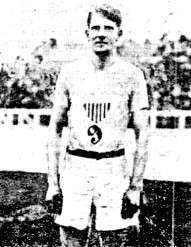 |
1885–1968 | Member of the Irish American Athletic Club. | |||
| Samuel J. Battle | No image available |
Lieutenant | 1883–1966 | 1911–1941 | First black police officer in the city of Brooklyn, later New York City. | |
| Charles Becker | 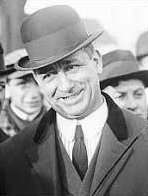 |
Lieutenant | 1870–1915 | 1893–1912 | Convicted and executed for the 1912 murder of a Manhattan gambler Herman Rosenthal. | |
| Johnny Broderick |  |
Detective | 1894–1966 | 1923–1947 | A popular "celebrity detective" during Prohibition, he headed the Industrial Squad in the 1920s and was famed for personally assaulting criminals and suspects. | |
| George Bonhag |  |
1882–1960 | 1849–1865 | Member of the Irish American Athletic Club. | ||
| John Coughlin | No image available |
Inspector | 1874–1951 | 1896–1928 | Served as head of the NYPD detectives division and was responsible for the capture of bank robber Frank Hamby. He was forced into retirement in the aftermath of the Arnold Rothstein murder in 1928. | |
| Michael Fiaschetti | No image available |
Detective | 1886–1960 | 1908–1922 | One of the original 5 members of the NYPD's "Italian Squad", he succeeded Lt. Joseph Petrosino after his murder in 1909. | |
| Max Finkelstein | No image available |
Captain | ?–1940 | 1911–1940 | Jewish-American police captain who was hand-picked by Mayor Fiorello H. La Guardia to lead a special squad to protect visiting officials from Nazi Germany and the German consulate in 1938. | |
| John Flanagan | 1873–1938 | 1903–1910 | Member of the Irish American Athletic Club and the "Irish Whales". | |||
| George Samuel Dougherty | Deputy Police Commissioner | 1865–1931 | 1888–1913 | One-time head of the NYPD Detectives Bureau, he is credited with introducing modern-day fingerprinting to the police force. He was involved in many high-profile criminal cases, most notably, solving the 1912 murder of Herman Rosenthal which resulted in the conviction and execution of fellow police detective Charles Becker and the Lenox Avenue Gang. | ||
| John Eller | 1883–1967 | 1905–1942 | Member of the Irish American Athletic Club. | |||
| Richard Enright | 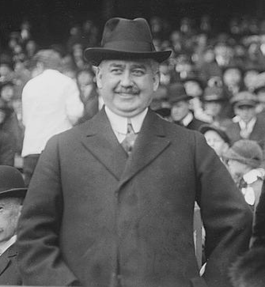 |
Police commissioner | 1871–1953 | 1896–1925 | First police officer to be appointed police commissioner. | |
| Egon Erickson | No image available |
1888–1973 | 1911–1939 | Member of the Irish American Athletic Club. | ||
| Simon Gillis |  |
1875–1964 | Member of the Irish American Athletic Club and the "Irish Whales". | |||
| Isabella Goodwin | No image available |
Detective | 1865– | 1896–1924 | First female police officer promoted to detective. | |
| Mary Hamilton | No image available |
1917–1926 | First director of the NYPD Policewomen's Bureau | |||
| William H. Hodgins | No image available |
Captain | 1856–1912 | 1888–1912 | Longtime police captain who was credited with breaking up numerous street gangs, most notably the Eastman and Humpty Jackson gangs during the turn of the 20th century. He was also involved in the peace negotiations which eventually ended the Tong wars in Chinatown. | |
| Robert H. Holmes | No image available |
1888–1917 | 1913–1917 | First African-American police officer to die in the line of duty. | ||
| Pat McDonald | 1878–1954 | Member of the Irish American Athletic Club and the "Irish Whales". | ||||
| Matt McGrath |  |
Inspector | 1875–1941 | Member of the Irish American Athletic Club. | ||
| Emil Muller | No image available |
1891–? | Member of the Irish American Athletic Club. | |||
| John J. O'Connell | No image available |
Detective Sergeant | 1884–1946 | 1905–1945 | Credited for the arrests of Owney Madden and Tanner Smith. Later served as head of the NYPD Police Academy and Chief Inspector. | |
| Joseph Petrosino |  |
Lieutenant | 1860–1909 | 1883–1909 | First Italian-American detective sergeant of the NYPD's Homicide Division and head of the "Italian Squad", he was a pioneer in the fight against organized crime in the United States. He was murdered while secretly investigating the Sicilian Mafia in Palermo. | |
| Phil Regan | No image available |
Detective | 1906–1996 | Later became a singer and film actor best known for his role as "The Singing Cop" in several musical comedies for both Republic and Monogram studios. In 1972, he was convicted for bribery in a real estate scandal. | ||
| Barney Ruditsky | No image available |
Detective | 1898–1962 | 1921–1940 | Was a popular "celebrity detectives" during Prohibition. He later became a private detective, night club owner, and technical adviser in Hollywood. | |
| Harry Schaaf | 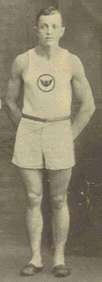 |
Patrolman | 1912–1943 | Member of the Irish American Athletic Club. | ||
| Martin Sheridan | Sergeant | 1881–1918 | 1906–1918 | Member of the "Irish Whales". | ||
| Patrick Sheridan | No image available |
Lieutenant | 1872–1942 | 1896–1937 | Commander of Gangster Squad. | [13] |
| Antonio F. Vachris | Lieutenant | 1866–1944 | 1893–1919 | One time head the Italian Branch of the New York City Police Department. | ||
| Cornelius Willemse | No image available |
Captain | 1900–1925 | Longtime police captain of the NYPD's Homicide Squad, he battled many major criminals of the era including Kid Dropper, Little Augie Orgen and Tom Flanagan. |
Post-World War II: 1946–1977
| Name | Portrait | Rank | Life | Service years | Comments | Ref. |
|---|---|---|---|---|---|---|
| Mario Biaggi |  |
Detective Lieutenant | 1917–2015 | 1942–1965 | Later elected to the U.S. House of Representatives, he was forced to resign in 1988 following his conviction in two separate corruption trials. | |
| William Caunitz | No image available |
Detective Lieutenant | 1933–1996 | 1954–1984 | Later became a novelist. | |
| Emil A. Ciccotelli | No image available |
Commander | 1929–1998 | 1954–1992 | Deputy Chief and Chief of Detectives involved in the prosecution of the five major organized crime families in New York City in the 1980s and early 1990s. | |
| Bill Clark |  |
Detective | 1944– | 1969–1994 | Later became an award-winning television writer and producer best known for his work on NYPD Blue and other police dramas. | |
| Ed Dee | No image available |
Lieutenant | 1940– | 1961–1981 | Later became a novelist. | |
| Ed Deacy | No image available |
Detective | 1946– | ?–1989 | One-time "official national anthem singer" for the New York City Police Department. | |
| Bo Dietl | No image available |
Detective | 1950– | 1972–1985 | Police detective turned media personality who has appeared on the Fox News Network and the Don Imus Show. | |
| Eddie Egan | No image available |
Detective | 1917–1995 | 1952–1972 | He and fellow NYPD detective Sonny Grosso broke up an organized crime ring in 1961, seizing 112 pounds of heroin, later covered in the book and film The French Connection. | |
| Louis Eppolito and Stephen Caracappa | No image available |
Detective(s) | 1948– ; 1942– |
1969–1990; 1969–1992 |
Associate members of the Gambino crime family who infiltrated the NYCPD and carried out mob hits for the New York City underworld during the 1980s and 1990s. | |
| Nicholas Estavillo | Chief of Patrol | 1945– | 1968–2007 | First Puerto Rican chief of patrol of the New York City Police Department. | ||
| Sanford Garelik | No image available |
Chief inspector | 1918–2011 | 1940–1979 | First Jewish chief inspector of the New York City Police Department. | |
| Martin Golden |  |
1973–1983 | Later became a member of the New York City Council and the New York State Senate. | |||
| Sonny Grosso | No image available |
Detective | 1937– | 1951–1976 | He and partner Eddie Egan broke up an organized crime ring in 1961, seizing 112 pounds of heroin, later covered in the book and film The French Connection. | |
| Fred Heineman |  |
Deputy chief | 1929–2010 | 1955–1979 | Later became a U.S. Congressman in North Carolina. | |
| Sterling Johnson, Jr. |  |
1934– | 1956–1967 | Later became a senior United States District Judge for the Eastern District of New York. | ||
| Robert Leuci | No image available |
Detective | 1940–2015 | 1961–1981 | Known for his work exposing corruption in the New York City police department and the criminal justice system. | |
| Irma Lozada | No freely licensed image available |
1959–1984 | 1980–1984 | First female police officer to die in the line of duty in New York City. | ||
| Thomas J. Manton | 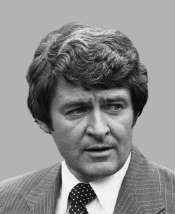 |
1932–2006 | 1955–1960 | Later became a U.S. Congressman. | ||
| Barney Martin | Detective | 1923–2005 | Later became a film and television actor best known for his role as Morty Seinfeld in the television series Seinfeld. | |||
| Suzanne Medicis | No image available |
Policewoman | 1942– | 1972–1997 | In 1982, Medicis became the first female to be awarded the Combat Cross. | [14] |
| Pete Morisi | No image available |
1928–2003 | 1956–1976 | Later became a comic book writer and artist. | ||
| Arthur J. Nascarella | No image available |
1944– | Later became a film and television actor best known for his role as Capo Carlo Gervasi in the television series The Sopranos. | |||
| John F. O'Donohue | No image available |
Lieutenant | 1946- | 1968-1988 | Later became a film and television actor best known for his role as Sgt. Eddie Gibson in the television series NYPD Blue. | |
| Seymour Pine | No image available |
Deputy Inspector | 1917– | 1941–1976 | Led the police raid on the Stonewall Inn which sparked the Stonewall riots. | |
| Joe Sánchez |  |
1947– | 1973–1985 | Police officer whose attempts in 1982 to expose illegal activities being committed by high-ranking NYPD officers resulted in a highly publicized court trial and his dismissal from the force. | ||
| Lloyd Sealy | No image available |
Police Commander | 1917–1985 | 1942–1969 | First African American police commander of the New York City Police Department. | |
| Albert Seedman | No image available |
Chief Detective | 1918–2013 | 1941–1972 | First and so far only Jewish chief of detectives | |
| Frank Serpico | No image available |
Detective | 1936– | 1959–1972 | Undercover police officer who testified against police corruption in 1971, and whose life was made into a movie and book. | |
| Richard X. Slattery | No image available |
1925–1997 | 1948–1960 | Later became a film and television actor best known for his role as Sgt. John McKenna in The Gallant Men, Captain John Morton in Mister Roberts, and Captain "Buck" Buckner in C.P.O. Sharkey. | ||
| Robert Volpe | No image available |
Detective | 1942–2006 | 1963–1983 | The first and only member of the NYCPD's bureau for art crime, the only bureau of its kind in the country. | [15] |
| Leonard Ernest Weir AKA Humza Al-Hafeez | No image available |
1931-2015 | 1959–1976 | First Black Muslim NYCPD officer whose rise to prominence came in the late 1950s when he founded and served as President of the National Society of Afro-American Policemen. Later became a writer and American social activist. |
Modern: 1978–present
| Name | Portrait | Rank | Life | Service years | Comments | Ref. |
|---|---|---|---|---|---|---|
| Eric Adams | Captain | 1984–2006 | Currently the Borough President of Brooklyn. Served in the New York Senate from 2006 to 2013. | |||
| Charles M. Barbuti | No image available |
Captain | 1963– | 1986–2011 | Former captain of the Bronx District Attorney's police squad. Target of internal investigation in 2009 for theft and destruction of two city cars and was fired the following year. | [16][17] |
| Gerard Benderoth | No image available |
Patrolman | 1969– | 1995–2005 | Later became a professional strongman. | |
| Michael Buczek | No image available |
Patrolman | 1964-1988 | 1985-1988 | Shot to death while investigating drug dealers in Manhattan's Washington Heights. A Little League baseball team, school, street and foundation was founded in 1989 named for him. | |
| Edward Byrne | No image available |
Patrolman | 1966–1988 | 1987–1988 | Second-generation police officer who was murdered in 1988. | |
| Kevin P. Clark | No image available |
Deputy Chief | 1956- | 1981–2003 | Later became commissioner of the Baltimore Police Department. | |
| Edward Conlon | No image available |
Detective | 1965– | 1995–2011 | Later became a novelist. | |
| Joe Jusko | 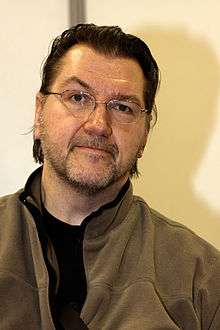 |
1959– | Later became a comic book writer and artist. | |||
| Patricia Feerick | No image available |
Lieutenant | 1960– | 1981–1994 | Policewoman who was fired for police misconduct. | [18][19] |
| James E. Davis | No image available |
1962–2003 | 1991–1998 | Later elected to the New York City Council. He was murdered by fellow politician Othniel Askew at New York City Hall. | ||
| Joseph Gray | No image available |
Patrolman | 1961– | 1986–2001 | Officer whose murder of three pedestrians in a drunk driving accident was covered up by his superiors. | |
| Mary Lowery | No image available |
1984– | First female helicopter pilot in the NYPD's Aviation Unit. | [20] | ||
| Jack Maple | No image available |
Deputy Police Commissioner | 1952–2001 | 1970–1996 | Served as Deputy Police Commissioner for Crime Control Strategies, he is credited for the creation of CompStat. | |
| Steven McDonald | No image available |
Detective | 1958– | Officer whose 1986 shooting left him a quadriplegic. He is the most seriously injured NYPD policeman to survive his injury. His son, Conor (b. 1987), who his wife, Patti Ann, was pregnant with during the shooting, became a New York City Police Department officer in 2010. | ||
| Brian McNamee | No image available |
Undercover officer | 1990–1993 | Later became a baseball coach for the New York Yankees and personal trainer for Roger Clemens. | ||
| Eddie Money (birth/legal name Edward Mahoney) |  |
Police Cadet | 1949– | 1966–1968 | Later became a musician. | |
| Hiram Monserrate |  |
Patrolman | 1967– | 1988–2000 | Later elected to the New York State Senate. He was expelled from the state senate following his conviction for assault in 2009. | |
| Ed Norris | No image available |
Deputy commissioner | 1960– | 1980–2000 | Later served as Baltimore Police Commissioner and Superintendent of the Maryland State Police. Norris later pleaded guilty to federal corruption and tax charges. | |
| Jane Perlov | No image available |
Chief of Detectives | 1956– | 1981–1998 | First female Detective Borough Commander in the New York City Police Department. | [21] |
| Russel Timoshenko | No free image available |
Detective (posthumously) | 1983–2007 | 2006–2007 | Officer whose 2007 murder resulted debate over gun control laws in New York City | |
| Adrian Schoolcraft | No image available |
Patrolman | 1976– | 2002–2010 | Officer who released secretly recorded tapes to The Village Voice showing numerous instances of police misconduct. | |
| Carol Shaya-Castro | No image available |
Patrolwoman | 1970– | 1991–1995 | Policewoman who was fired from the NYCPD when she posed for Playboy in 1994. | |
| Michael Simanowitz | No image available |
Auxiliary Deputy Inspector | 1971– | 1995– | Later elected to the New York State Assembly. | |
| Frank Spangenberg | No image available |
Lieutenant | 1957– | 1986– | First person to win more than $100,000 in five days on the game show Jeopardy!. | |
| James Zadroga | No image available |
Detective | 1971–2006 | 1992–2001 | First officer whose death from a respiratory disease was attributed to his participation in rescue and recovery operations following the September 11 attacks. | |
| David Zayas | 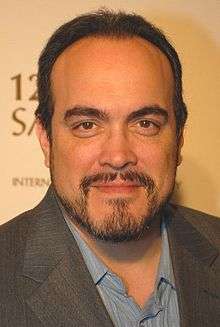 |
Patrolman | 1962– | 1986–2001 | Later became a film and television actor best known for his roles as Enrique Morales in the television series Oz and Angel Batista in Dexter. |
References
Notes
- 1 2 3 4 5 6 7 8 9 10 11 12 13 14 15 16 17 18 19 20 21 22 23 24 25 26 27 28 29 30 31 Herbert Asbury (1928). The Gangs of New York. Alfred A. Knopf. ISBN 1-56025-275-8.
- 1 2 3 4 5 6 7 8 9 10 11 12 13 14 15 16 17 18 19 20 "THE METROPOLITAN POLICE MACHINE.; The Old Police of the "Bloody Sixth" Contrasted with the Existing Force.". New York Times. May 14, 1865. Retrieved September 23, 2012.
- ↑ "Capt. Brackett Dead". New York Times. March 27, 1888. Retrieved August 22, 2012.
- ↑ "Capt. James Irving Dead; The Career of a Brave and Daring Detective". New York Times. February 20, 1885. Retrieved August 22, 2012.
- ↑ "CAPT. PETTY DEAD.; A Police Officer Who Figured In Some Stirring Scenes". New York Times New York Times. December 5, 1889. Retrieved August 22, 2012.
- ↑ "Death of a Police Captain.". New York Times. October 27, 1863. Retrieved August 22, 2012.
- ↑ "HENRY V. STEERS DEAD.; Ex-Deputy Chief of Police Dies at Home in His 85th Year". New York Times. November 2, 1917. Retrieved August 22, 2012.
- ↑ "Obituary.; Capt. Thomas Steers". New York Times. June 14, 1884. Retrieved August 22, 2012.
- ↑ NY Times and NY Herald Tribune dated 27 Feb 1878.
- ↑ Redmond, Patrick R. (2014). The Irish and the Making of American Sport, 1835-1920. McFarland. ISBN 147660584X.
- ↑ "His Work Almost Done.; A Veteran Police Captain Lying At The Point Of Death". New York Times. July 7, 1879. Retrieved August 22, 2012.
- ↑ "POLICE CAPT. PRICE DEAD.: Old Detective Worked on Many Famous Crimes.". New York Times. January 9, 1914.
- ↑ "PATRICK SHERIDAN DIES; WAS FEARED BY GANGSTERS". The Brooklyn Daily Eagle. April 6, 1942.
- ↑ "Combat Cross". BeyondTheLineOfDuty.com.
- ↑ Douglas Martin (December 5, 2006). "Robert Volpe, Art-Theft Expert, Dies at 63". New York Times. p. A25. Retrieved 2008-04-06.
- ↑ Gendar, Alison (June 27, 2009). "Internal affairs investigating Bronx NYPD captain over use of city vehicle". Daily News.
- ↑ Levitt, Len (November 29, 2010). "BYE BYE, BARBUTI". HuffingtonPost.com.
- ↑ Hays, Tom (April 16, 1995). "NYPD Bad Cop's Illegal Search Mars Career, Good Cop Image". Los Angeles Times.
- ↑ Weiss, Murray (December 22, 2000). "EX-COP FEERICK GETS EARLY GIFT: HER LAW LICENSE". New York Post.
- ↑ Scott, Phil (February 1995). "Pilots: Mary Lowery". The AOPA Pilot: Voice of General Aviation. Aircraft Owners and Pilots Association. 38: 146.
- ↑ Ojito, Mirta (December 7, 1997). "For a Female Officer, New Job Is Another First". The New York Times. Retrieved 22 April 2011.
Further reading
- Costello, Augustine (1885). Our Police Protectors: History of the New York Police. New York: Chas. F. Roper & Co.
- Fales, William E. S. (1887). Brooklyn's Guardians: A Record of the Faithful and Heroic Men who Preserve the Peace in the City of Homes. Brooklyn.
- Defenders and Offenders. New York: D. Buchner & Company. 1888.
- Costello, Augustine E. Our Police Protectors: History of the New York Police from the Earliest Period to the Present Time. New York: A.E. Costello, 1885.
- Hickey, John J. Our Police Guardians: History of the Police Department of the City of New York, and the Policing of Same for the Past One Hundred Years. New York: John J. Hickey, 1925.
External links
- NYPD website
- Cornell, Bill. "Police Inspectors & Captains & Chiefs of the Fire Departments". T207.com.
This article is issued from Wikipedia - version of the 11/18/2016. The text is available under the Creative Commons Attribution/Share Alike but additional terms may apply for the media files.